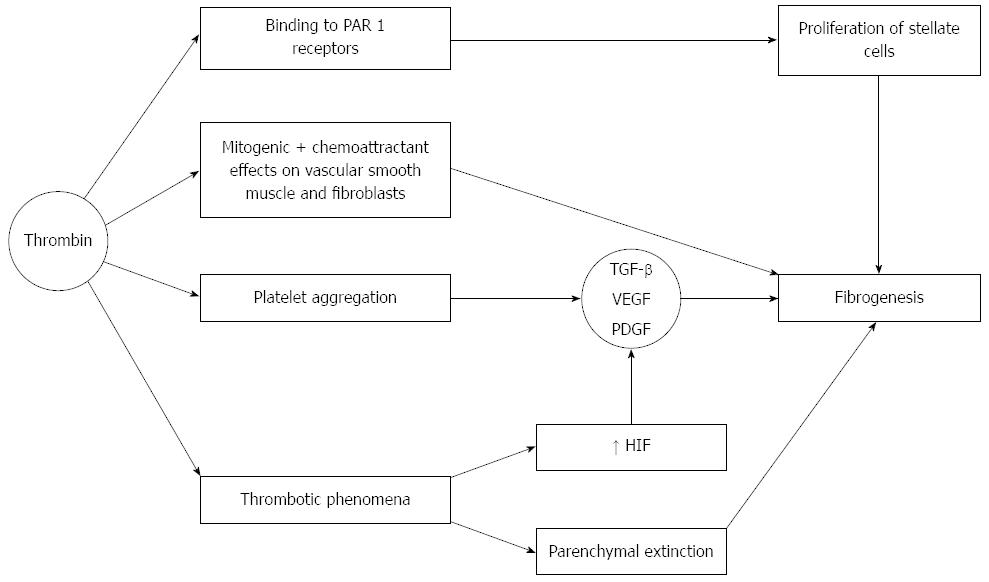Copyright
©The Author(s) 2016.
World J Gastroenterol. May 14, 2016; 22(18): 4427-4437
Published online May 14, 2016. doi: 10.3748/wjg.v22.i18.4427
Published online May 14, 2016. doi: 10.3748/wjg.v22.i18.4427
Figure 4 Effects on thrombin on fibrogenesis.
Thrombin binds to PAR-1 receptors on hepatic stellate cells which leads to proliferaton and activation of these cells Thrombin also promotes platelet aggregation. Platelet alpha granules are rich in several growth factors, including TGF-β, which in turn promotes fibrogenesis. Vascular endothelial growth factor (VEGF) and PDGF also play contributory roles. Thrombin also exerts mitogenic and chemoattractant effects on vascular smooth muscle cells and fibroblasts. Finally, thrombotic phenomena also occur within the liver, leading to ischemic parenchymal injury, and substitution of parenchyma by fibrous tissue (the so called parenchymal extinction). When a clot provokes ischemia, VEGF, PDGF and TGF-β are activated probably via an increase in hypoxia-inducible-factor (HIF), which is raised in cirrhosis in relation to portal microthrombotic phenomena.
- Citation: González-Reimers E, Quintero-Platt G, Martín-González C, Pérez-Hernández O, Romero-Acevedo L, Santolaria-Fernández F. Thrombin activation and liver inflammation in advanced hepatitis C virus infection. World J Gastroenterol 2016; 22(18): 4427-4437
- URL: https://www.wjgnet.com/1007-9327/full/v22/i18/4427.htm
- DOI: https://dx.doi.org/10.3748/wjg.v22.i18.4427









